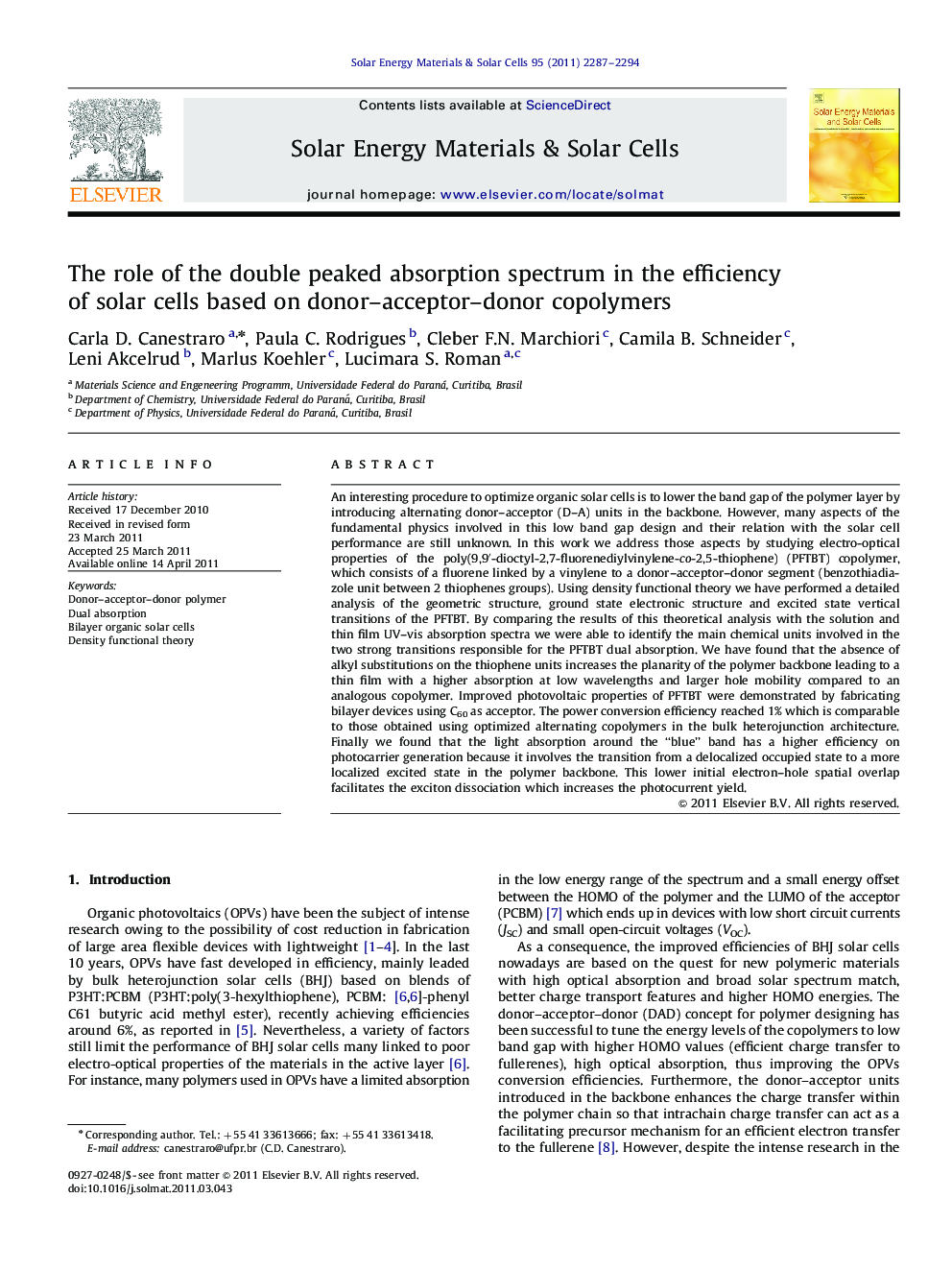| Article ID | Journal | Published Year | Pages | File Type |
|---|---|---|---|---|
| 78779 | Solar Energy Materials and Solar Cells | 2011 | 8 Pages |
An interesting procedure to optimize organic solar cells is to lower the band gap of the polymer layer by introducing alternating donor–acceptor (D–A) units in the backbone. However, many aspects of the fundamental physics involved in this low band gap design and their relation with the solar cell performance are still unknown. In this work we address those aspects by studying electro-optical properties of the poly(9,9′-dioctyl-2,7-fluorenediylvinylene-co-2,5-thiophene) (PFTBT) copolymer, which consists of a fluorene linked by a vinylene to a donor–acceptor–donor segment (benzothiadiazole unit between 2 thiophenes groups). Using density functional theory we have performed a detailed analysis of the geometric structure, ground state electronic structure and excited state vertical transitions of the PFTBT. By comparing the results of this theoretical analysis with the solution and thin film UV–vis absorption spectra we were able to identify the main chemical units involved in the two strong transitions responsible for the PFTBT dual absorption. We have found that the absence of alkyl substitutions on the thiophene units increases the planarity of the polymer backbone leading to a thin film with a higher absorption at low wavelengths and larger hole mobility compared to an analogous copolymer. Improved photovoltaic properties of PFTBT were demonstrated by fabricating bilayer devices using C60 as acceptor. The power conversion efficiency reached 1% which is comparable to those obtained using optimized alternating copolymers in the bulk heterojunction architecture. Finally we found that the light absorption around the “blue” band has a higher efficiency on photocarrier generation because it involves the transition from a delocalized occupied state to a more localized excited state in the polymer backbone. This lower initial electron–hole spatial overlap facilitates the exciton dissociation which increases the photocurrent yield.
Graphical abstractFigure optionsDownload full-size imageDownload as PowerPoint slideHighlights► The PFTBT copolymer has been experimental and theoretically analyzed. ► DFT addresses the contribution of each chemical unit in the polymer orbitals. ► Presence of a dark state with high charge transfer in the absorption dual band. ► Cells made with PFTBT in bilayer structure gives 1% of power conversion efficiency.
